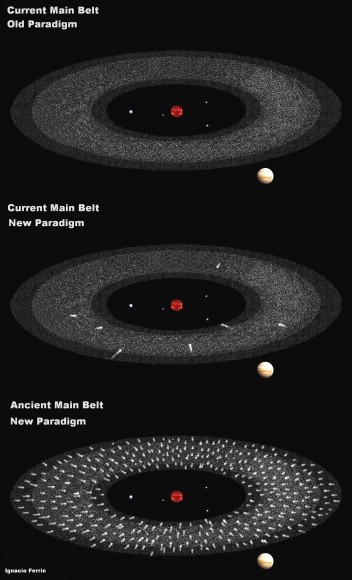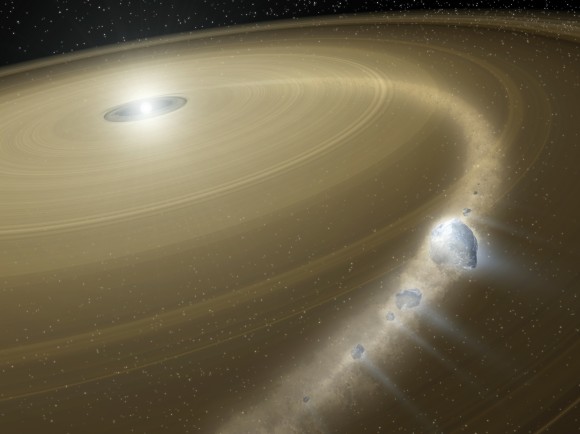Mysteriously, however, 12 active comets have been seen in and around the asteroid belt. The astronomers theorize there must be a number of inactive comets in this region that flare up when a stray gravitational force from Jupiter nudges the comets so that they receive more energy from the Sun.
The researchers examined comets originating from the main asteroid belt between Mars and Jupiter, a spot where it is believed there are only asteroids (small bodies made up mostly of rock). Comets, by contrast, are a mixture of rocks and ice. The ice melts when the comet gets close to the sun, and can form spectacular tails visible from Earth. (Here's more detail on the difference between a comet and an asteroid.)

"We have found that some of these are not dead rocks after all, but are dormant comets that may yet come back to life if the energy that they receive from the Sun increases by a few per cent."
The team believes this zone was far more active millions of years ago, but as the population got older they got more quiet.
"Twelve of those rocks are true comets that were rejuvenated after their minimum distance from the Sun was reduced a little," the researchers stated.
"The little extra energy they received from the Sun was then sufficient to revive them from the graveyard."
Check out more details of the research in the Monthly Notices of the Royal Astronomical Society. There is also a preprinted version available on Arxiv.
Source: Royal Astronomical Society




Reader Comments
to our Newsletter